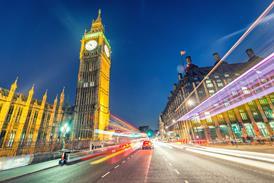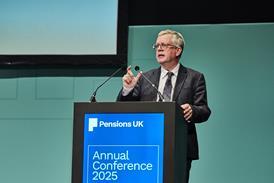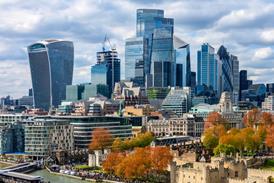What is self-sufficiency? It is certainly not a position of nil risk, as some assume, as that would mean passing the risk to someone else.
It is surely equally unrealistic to hold more assets than an insurance buyout premium. In that situation, the sponsor and the members will both start to wonder why the trustees are keeping a pile of cash that is not needed and why they, the beneficiaries of the trust, are not sharing it.
The employer is unlikely to get more than a small share of any upside that might occur. Tails it loses, heads it shares
Given these statements, what options are left?
I would suggest it can only mean running the pension scheme in a low-risk way, without a deficit, with the company putting in less money than the insurance premium.
It is simply moving away from volatile assets such as equities into low-risk investments, and matching interest and inflation risk. The employer is still on the hook, but in some circumstances it might tolerate the position if it is reasonably certain that cash payments in the future can be made very unlikely. But when can employers have this certainty?
Insurance is not so expensive
For a pensioner-only scheme, provided it is not made up of pensions that are difficult to insure at a reasonable price, such as pensioners who live overseas, an insurer will typically provide a price that implies a return on assets somewhere between gilts and gilts plus 0.5 per cent a year.
If the scheme is instead run using low-risk investments, then a large scheme may have a return somewhere between gilts and gilts plus 1 per cent a year, less expenses. But it will still have mortality risk.
In this situation, for a company whose business is not pensions, running it for a tiny economic gain makes little sense.
The running cost alone could erode any saving between self-sufficiency and buyout, so why would the employer not pick its moment and get rid of the scheme rather than incurring the extra risk?
If the scheme is run on, the employer would be on the hook for future deficits, yet due to a combination of UK legislation and refund of surplus tax, the employer is unlikely to get more than a small share of any upside that might occur. Tails it loses, heads it shares.
Prices hike for deferreds
The position for a scheme with deferred members is different. The reason for this is that the insurers’ prices are much higher for deferred members, particularly the younger ones.
The insurer price will often imply a return on assets that is significantly worse than the return available from gilts. Therefore, the scheme could invest in very low-risk assets and provide benefits more cheaply than it could by insuring them.
If the scheme is small then most likely the running costs will be prohibitive, but for a medium to large scheme it is viable to run the scheme on, safe in the knowledge that the buyout deficit will tend to get smaller each year, rather than bigger.
It will be exposed to mortality risk, which tends to be unpredictable, but on the other hand, there will be offsetting profits as some members will transfer out before they retire.
Over the past few years, transfers by individual members from defined benefit schemes to money purchase schemes have snowballed to £10bn a year, and insurer pricing currently gives no discount for this.
Convincing investors is tricky
Although self-sufficiency can be viable, shareholders often don’t understand or believe the risk from a pension scheme can be low.
There may be problems convincing new shareholders when companies are bought and sold and problems when a company is seeking to raise more capital.
This may incentivise buyout even when an employer contribution would otherwise not be needed for a self-sufficiency approach. It is not a permanent solution.
Perhaps for a decade it can have merit, giving time for deferred members to start taking their pension from the scheme or to take an individual transfer elsewhere, both of which improve the scheme’s finances.
Harry Harper is head of buy-in and buyout at JLT Employee Benefits






















